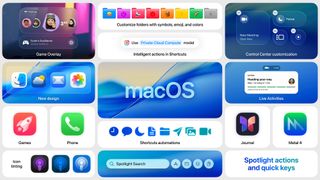Explore Software
Latest about Software

Meta just u-turned on the best VR announcement it ever made — and might have handed the win to Android XR
By Hamish Hector published
Meta has ‘paused’ third-party headset partnerships, which feels like a major win for Android XR.

Remotely locking your Windows 11 PC is now possible using an Android phone
By Darren Allan published
Remotely locking your Windows 11 PC is now possible using an Android phone thanks to updated app – here's how to get it.

Your Ray-Ban Meta glasses just got a major audio update — especially for Spotify users
By Hamish Hector published
Latest Ray-Ban Meta update brings Conversation Focus and Spotify soundtracking to you smart specs.

Microsoft explains how Windows 11's AI agents get access to your files
By Darren Allan published
Microsoft calms some fears about Windows 11's AI agents, clarifying permissions around file access.

Microsoft is fixing a huge problem with a nifty Windows 11 security feature
By Darren Allan published
Windows 11 has a powerful security feature you may not have heard of – and I'm glad to see Microsoft is fixing its most baffling drawback.

Google Maps just got a big upgrade for your skiing trip – and it’s all thanks to a backlash from snowsports lovers
By Rowan Davies published
Ski trails, lodge markers, and lifts have returned to Google Maps – and these are the resorts that are currently available to view.

Google smashes language barriers with live translation for any earbuds on Android — here’s how it works
By Rowan Davies published
You no longer have to use Pixel Buds to take advantage of live translations in Google Translate - now all earbuds are compatible.

Beat the RAM price rises with this free Windows 11 hack for an instant speed boost
By Matt Hanson published
I’ll show you how Windows 11’s virtual memory hack can help you beat RAM price rises.
Sign up for breaking news, reviews, opinion, top tech deals, and more.

